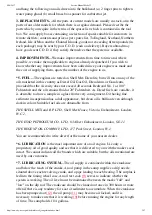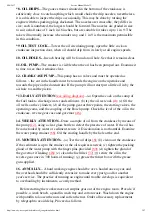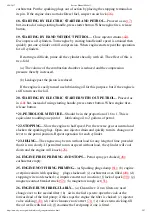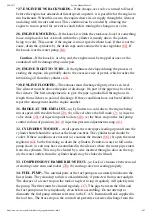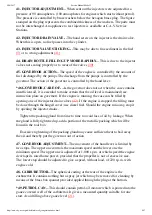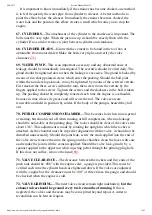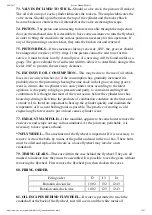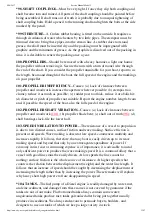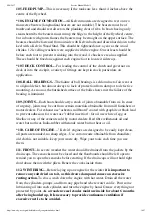
9/26/2017
Service Manual Model J
http://www.sky-net.org.uk/kelvin/diesel/j_range/man/index.html
15/17
*98. SHAFT COUPLINGS.--Must be very tight. If once they slip both coupling and
shaft become torn and ruined. All parts of the shaft coupling should be painted before
being assembled. If shaft runs out of truth it is probably due to unequal tightening of
shaft coupling bolts. Hold a pencil to the running shaft and tighten the bolts at the side
marked by the pencil.
*99 STERNTUBE.--A Cutless rubber bearing is fitted on the outside. It requires a
through circulation of water which enters by two little pipes. The sternpost must be
trimmed down to bring these pipes into the stream line. As rubber does not stand
grease, the shaft must be inserted dry and the packing must be impregnated with
graphite and the minimum of grease. As the graphite is dissolved out of the packing in
time, it is desirable to renew the packing once a year.
100. PROPELLERS.--Should be removed with a heavy hammer, a light one harms
the propeller without removing it. Secure the nuts with a turn of monel wire through
the end of the shaft. If you consider the propeller unsuitable for your boat, report to us
the length, beam and draught of the boat, the full speed of the engine and the markings
on your propeller.
101. PROPELLER INEFFICIENCY.--Causes: (a) Lack of clearance between
propeller and woodwork, increase the aperture wherever possible; (b) sternpost too
clumsy, reduce it as much as possible; (c) rudder post too thick, reduce it or abolish it;
(d) diameter or pitch of propeller not suitable. Report the engine number, length, beam
and, if possible, the speed of the boat, also the full speed of the engine.
102. PROPELLER SHAFT VIBRATION.--Causes: (a) Lack of clearance between
propeller and woodwork
; (b) propeller blade bent; (c) shaft out of truth
; (d)
shaft bearings slack, file the lower half.
103. SPEED IN RELATION TO POWER.--The resistance of a vessel to propulsion
is due to two distinct causes, surface friction and wave making. Surface friction is
present at all speeds. Wave making is absent at low speed, commences suddenly and
increases rapidly. It follows, therefore, that any boat is easily driven up to its wave
making speed, and beyond that only by an extravagant expenditure of power. If
economy in first cost or in running expense is of importance, it is advisable to instal
only sufficient power to produce the wave making speed. It is a common fallacy that a
vessel with good lines must be easily driven. At low speeds the lines count for
nothing; surface friction is the whole source of resistance. At higher speeds what
counts is the relation between the displacement (weight) and the water line length. It
follows that an increase of speed should be sought by decreasing the displacement or
increasing the length rather than by increasing the power. These remarks will explain
why heavy short high power craft are disappointing in speed.
*104. TANKS.--The fuel pump of a Diesel engine is readily damaged by water, rust,
and zinc sediment, and damage from these causes is not covered by guarantee if the
tanks are not of our make. Flat bottomed tanks always contain some water;
ungalvanised tanks produce rust; tanks galvanised after being put together usually
produce zinc sediment. We always endeavour to persuade buyers, builders, and
designers to use our tanks of which we keep a large variety in stock.


